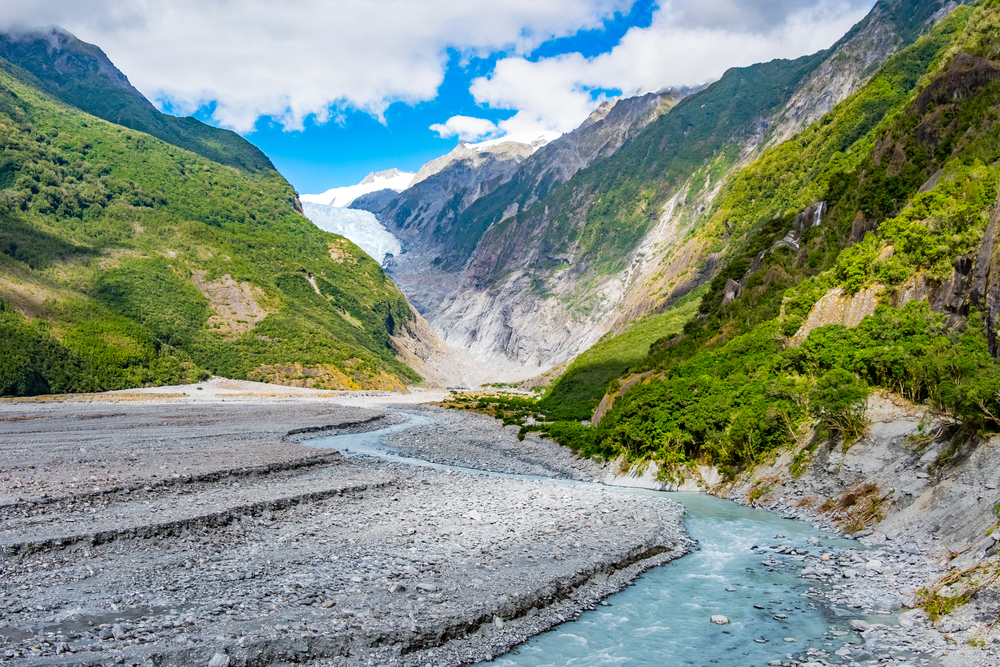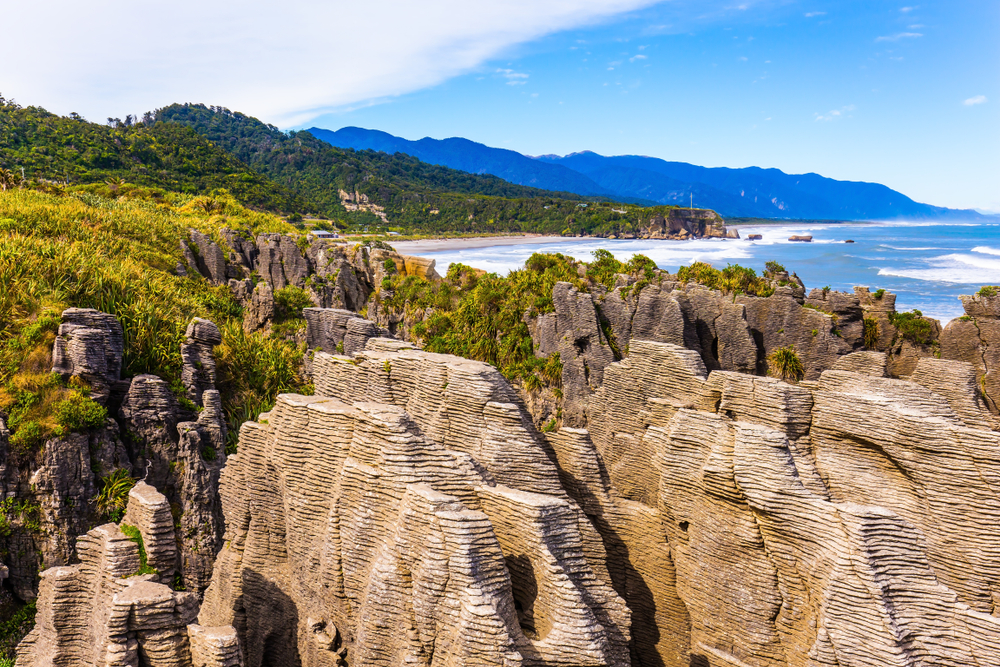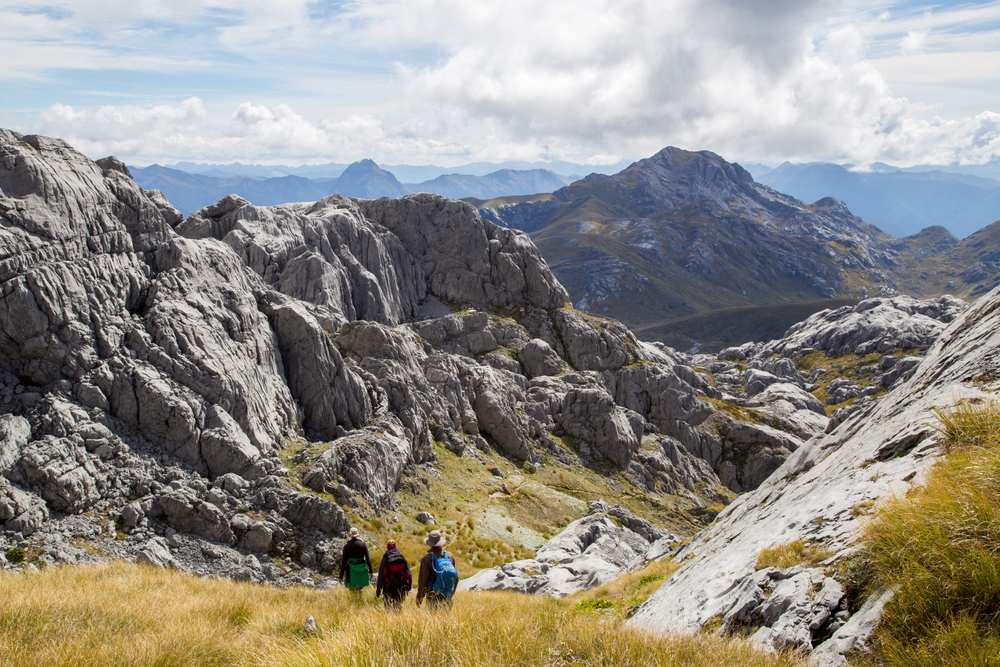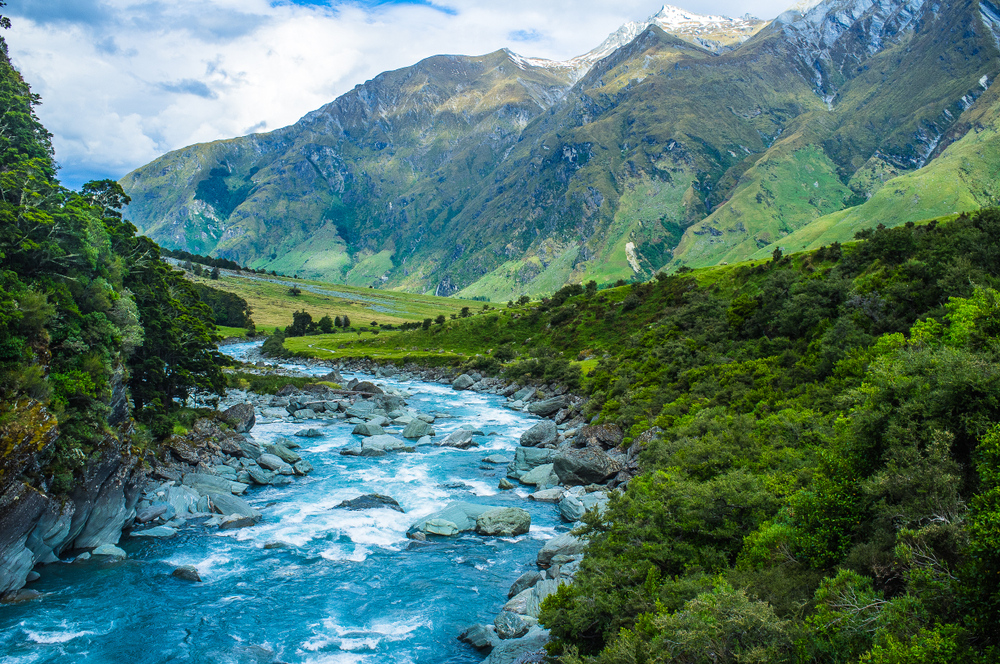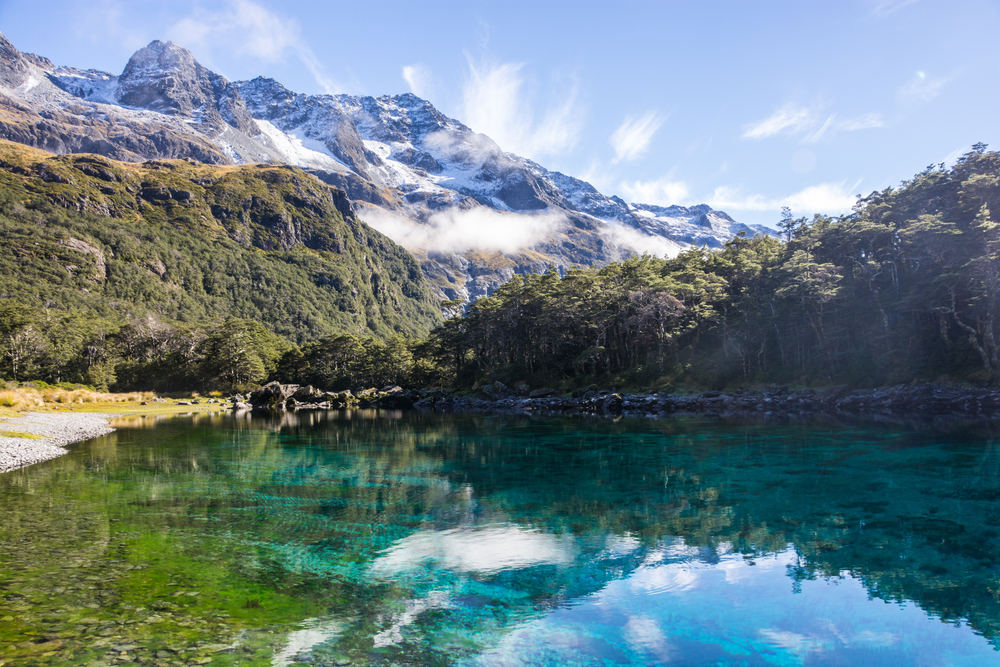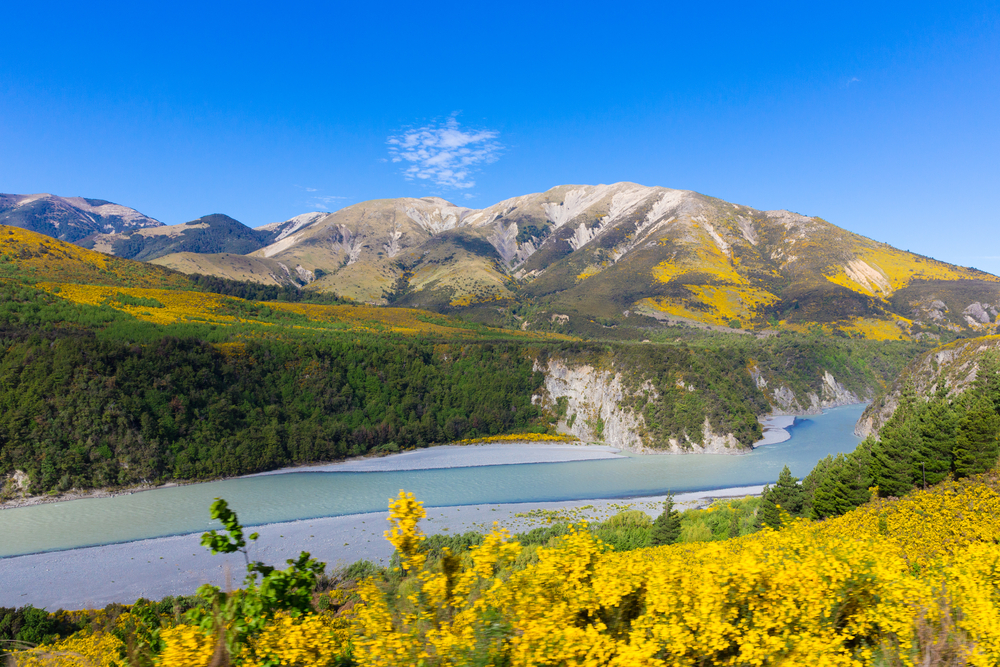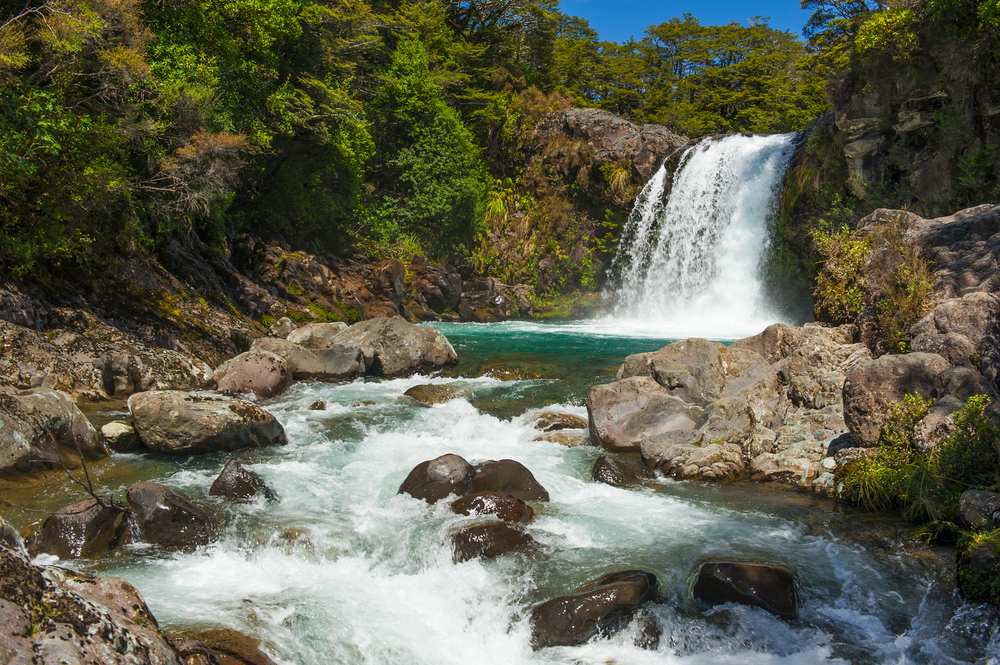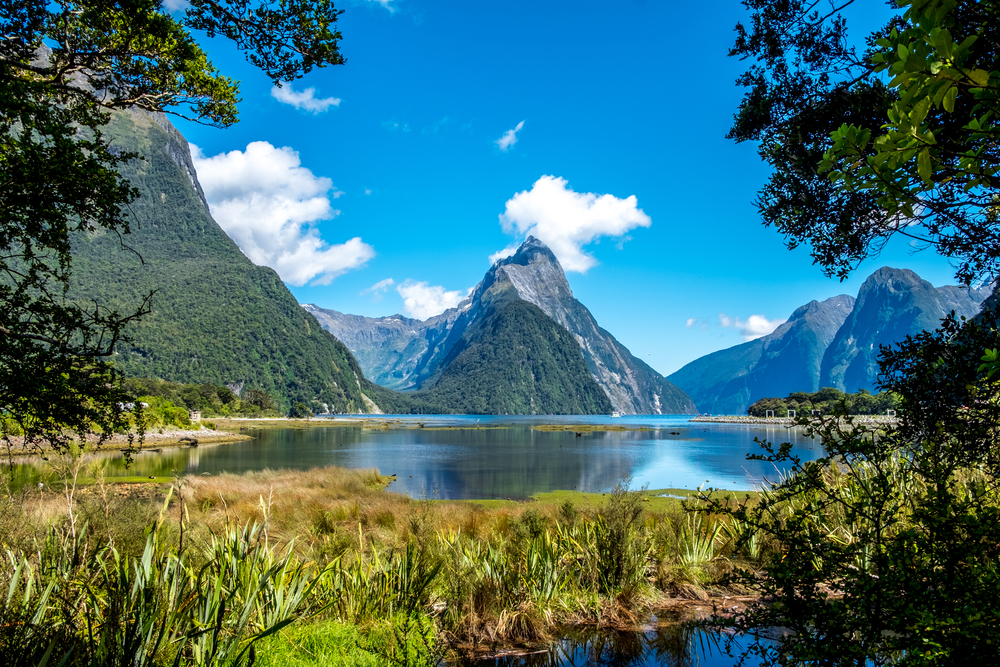Westland Tai Poutini Overview
Westland Tai Poutini National Park, located on the West Coast of New Zealand’s South Island, spans approximately 1,175 square miles (3,044 square kilometers).
Established in 1960, the park is part of the Te Wahipounamu World Heritage Area and is known for its dramatic landscapes that range from rugged coastline to alpine peaks. It is home to two of New Zealand’s most famous glaciers, Franz Josef Glacier (Kā Roimata o Hine Hukatere) and Fox Glacier (Te Moeka o Tuawe), which descend from the Southern Alps toward the lush rainforest below.
The park stretches from the highest mountains, including peaks over 9,800 feet (3,000 meters), to the wild beaches of the Tasman Sea. The unique combination of glaciers, rainforest, rivers, and coastline makes it one of the most diverse natural environments in New Zealand.
The terrain within the park is strikingly varied, encompassing glaciated valleys, braided river systems, and dense temperate rainforest. The Southern Alps dominate the eastern portion, with Mount Cook (Aoraki), New Zealand’s tallest peak, visible from certain parts of the park.
The lower elevations are covered in lush rainforest, where rimu and kāmahi trees thrive, while the glacial valleys are often blanketed in ferns and mosses. The coastline, characterized by dramatic cliffs and windswept beaches, provides a stark contrast to the ice-covered heights.
Rivers such as the Waiho and Cook Rivers carve their way through the landscape, fed by the melting glaciers above. This blend of ice, forest, and water creates an ecosystem that supports a remarkable array of wildlife.
Visitors to Westland Tai Poutini National Park may encounter a variety of wildlife, including some of New Zealand’s most iconic bird species. The kea, an alpine parrot known for its intelligence and mischievous nature, is commonly seen in the mountainous areas. The rare and elusive kiwi, particularly the great spotted kiwi (roroa), can be found in the park’s dense forests.
Other notable bird species include the tomtit, tui, and kererū, a large native wood pigeon. Along the rivers and wetlands, visitors might spot the blue duck (whio), which thrives in fast-flowing streams. The park is also home to native long-tailed bats, one of the few land mammals in New Zealand. Along the coastline, fur seals bask on rocky outcrops, while dolphins and even whales are occasionally seen offshore.
One of the most popular attractions within the park is the Franz Josef Glacier, which descends to just 984 feet (300 meters) above sea level, making it one of the most accessible glaciers in the world. Fox Glacier is similarly impressive, offering breathtaking views and opportunities for guided ice treks.
Lake Matheson, famous for its mirror-like reflections of Aoraki/Mount Cook and Mount Tasman, is another must-visit spot. Visitors can experience the park through a variety of activities, including scenic flights that provide aerial views of the glaciers, guided hikes that explore both the ice and the surrounding rainforest, and heli-hiking, which combines a helicopter ride with a guided glacier trek. For those seeking less strenuous experiences, the many well-maintained walking trails offer the chance to explore the lush forests and serene lakes at a more relaxed pace.
Conservation efforts within Westland Tai Poutini National Park focus on protecting its fragile ecosystems from the effects of climate change and human activity. The retreat of the Franz Josef and Fox Glaciers due to rising temperatures is one of the park’s most pressing challenges.
Invasive species, including stoats and rats, pose a threat to native bird populations, particularly the kiwi. However, conservation successes include extensive predator control programs and habitat restoration efforts that have helped increase kiwi populations in the region. The park is managed by the Department of Conservation, which works alongside local iwi (Māori tribes) to ensure the land is protected and preserved for future generations.








































































